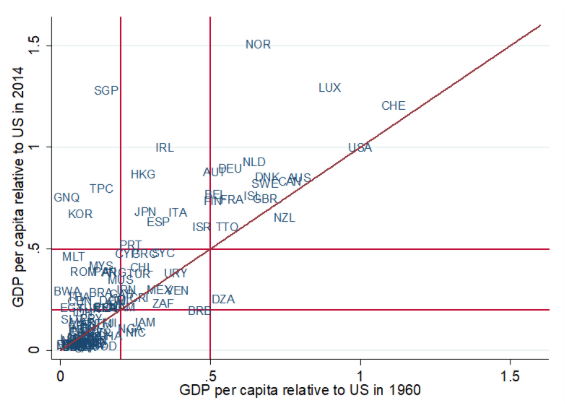Monday, June 17, 2019
The return of the policy that shall not be named: Principles of industrial policy
From VoxEU post by Reda Cherif and Fuad Hasanov:
“The ‘Asian miracles’ and their industrial policies are often considered as statistical accidents that cannot be replicated. The column argues that we can learn more about sustained growth from these miracles than from the large pool of failures, and that industrial policy is instrumental in achieving sustained growth. Successful policy uses state intervention for early entry into sophisticated sectors, strong export orientation, and fierce competition with strict accountability.
Achieving sustained growth over long periods of time has been an elusive ‘holy grail’ of macroeconomics. In the past 50 years developing economies have taken different paths. A few – such as the ‘Asian miracles’ of Hong Kong (China), South Korea, Singapore, and Taiwan Province of China – are catching up swiftly with the advanced economies, and some forging ahead. But many are falling behind, to use the terminology of Abramovitz (1986).
The empirical evidence shows that the odds for poor or middle-income countries to reach high-income status within two generations are very low (Cherif and Hasanov, forthcoming). Between 1960 and 2014, fewer than 10% of economies (16 out of 182 in the sample) reached high-income status. There were three categories of those that made it: Asian miracles, countries that discovered large quantities of oil, and those that benefited from joining the European Union (Figure 1)
Figure 1 Half a century of development
Source: Penn World Tables 9.0 (Feenstra et al. 2015).
Note: GDP per capita is in 2011 PPP dollars. The thresholds for upper-middle income and high income are 20 % and 50% of US GDP per capita, respectively (red lines). The diagonal line indicates no change in relative income levels (with respect to the US level).We argue (Cherif and Hasanov 2019) that one cannot ignore the pre-eminent role of industrial policy in the development of the Asian miracle countries as well as for Japan, Germany, and the US before them. The industrial policies pursued by the Asian miracles have a lot in common. This suggests that the standard ‘growth policy recipe’ of tackling only government failures (improving macro-stability, enforcing property rights, providing basic infrastructure and education, and so on) may not be enough to create advanced economies in a short period of time. Instead, recent research suggests that industrial policy may benefit economic development too (Rodrik 2019).”
Posted by at 10:37 AM
Labels: Inclusive Growth
Subscribe to: Posts
